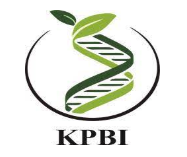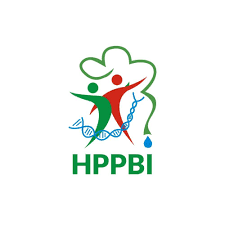DRAWING BASED MODELLING BERBANTUAN EBEAM CAPTURE UNTUK MENSTIMULASI REPRESENTASI MIKROSKOPIS CALON GURU BIOLOGI
DOI:
https://doi.org/10.15575/bioeduin.v9i1.4339Keywords:
Drawing based modeling, eBeam Capture, Microscopic Representation, Cell Biology.Abstract
References
Creswell & Clark. 2007. Designing and Conducting Mixed Methods Research. Sage Publications, Inc: United States America.
Devetak, I., Vogrinc, J., & Glazar, S.A. (2007). Assessing 16-Year-Old Students’ Understanding of Aqueous Solution at Submicroscopic Level. Research in Science Education, Vol 39, 157-179.
Dolan, E. & Grady, J. (2010). Recognizing Students’ Scientific Reasoning: A Tool for Categorizing Complexity of Reasoning During Teaching by Inquiry. Journal of Science Teacher Education, 21, 31 - 55.
Joolingen, Van., Bollen, Leenaars. (2010). What can be learned from computer modeling? Comparing expository and modeling approaches to teaching dynamic systems behavior. J Sci Educ
Technol 21(267):267-275. Doi:10.1007/s10956-011-9314-3.
Joolingen, Van., Bollen, Leenaars, & Gijlers. (2012). The learning effects of computer simulations in science education. Computers & Education, 58(1), 136-153.
Korir, D. K., & Kipkemboi F. (2014). The Impact of School Environment and Peer Influences on Students’ Academic Performance in Vihiga Country. Kenya. International Journal of Humanities and Social Sciences, 4 (5).
Louca, L. T., & Zacharia, Z. C. (2011). Modeling-based learning in science education: cognitive, metacognitive, social, material and epistemological contributions. Educational Review, 64 (December 2011), 471-492. doi:10.1080/00131911.2011.628748.
Schouten, J. H. Y. (2016). Drawing-Based Modelling in Science Education to Support Scientific Thinking. Research Project (45 ECTS) of Science Education and Communication Freudenthal Institute for Science and Mathematics Education. Utrecht University.
Setiawan, W. (2017). Era Digital dan Tantangannya. Seminar Nasional Pendidikan Universitas Pendidikan Indonesia, ISBN: 978-602-50088-0-1.
Smaldino, S.E. (2005). Instructional Technology and Media for Learning (8th ed.). Ohio: Merril Prantice Hall.
Solso, R. L. (1998). Cognitive Psychology. New York: Harcourt Brace Jovanovich.
Suprapto, K.P. (2012). Pengembangan Program Perkuliahan Anatomi Tumbuhan Berbasis Visuospatial melalui Representasi Mikroskopis Sistem Jaringan Tumbuhan untuk Meningkatkan Penalaran dan Penguasaan Konsep Calon Guru Biologi. Disertasi. Sekolah Pascasarjana, Universitas Pendidikan Indonesia.
Waldrip, B., Prain, V., & Carolan, J. (2007). Using multi-modal representations in junior secondary science. Paper presented at the conference of the European association for research in learning and instruction, Budapest.
Downloads
Published
How to Cite
Issue
Section
Citation Check
License
Authors who publish in Jurnal BIOEDUIN agree to the following terms:
- Authors retain copyright and grant the journal right of first publication with the work simultaneously licensed under a Attribution-ShareAlike 4.0 International (CC BY-SA 4.0) License that allows others to share the work with an acknowledgment of the work's authorship and initial publication in this journal.
- Authors are able to enter into separate, additional contractual arrangements for the non-exclusive distribution of the journal's published version of the work (e.g., post it to an institutional repository or publish it in a book), with an acknowledgment of its initial publication in this journal.
- Authors are permitted and encouraged to post their work online (e.g., in institutional repositories or on their website) prior to and during the submission process, as it can lead to productive exchanges, as well as earlier and greater citation of published work (See The Effect of Open Access).








